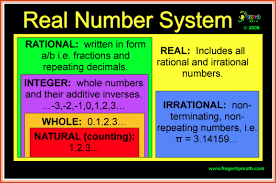DC vs. AC
In the Current Electricity
section, you learned about electric charge, current, voltage and other
related topics. But, just because you have a voltage does not mean
electric current will flow. Electrons also need a complete loop of
conductive material to flow, called a closed circuit.
Let's look at a light switch. When you turn the switch "on", the switch creates a path that conducts electricity and electrons start to move—meaning electric current flows—and the light turns on. As soon as you turn the switch "off", the path is broken and electrons can no longer flow. The switch is like a drawbridge; switching it on is letting down the bridge so the electrons can cross (just like cars crossing a bridge) and provide energy to the light bulb.
In the case of a direct current (abbreviated DC), the electrons always travel around the loop in the same direction (so the conventional current
also has a constant direction). below, shows a direct
current, or electrons all moving in one direction in a conductive wire.
All battery-powered devices, like cell phones and flashlights, run on
direct current. Note that a constant voltage will create a direct
current.
n the case of an alternating current (AC), electrons travel back and forth. Figure 6, below, shows an animation of alternating current. One moment they all move collectively in one direction, and the next moment they all move collectively in the opposite direction, creating an oscillating electrical current. One back-and-forth oscillation is called a cycle, and the number of cycles delivered per time unit is called the frequency. Frequency is measured in hertz (Hz). One cycle per second is 1 Hz, ten cycles per second is 10 Hz, etc. Note that the voltage creating this current will alternate with the same frequency.
Let's look at a light switch. When you turn the switch "on", the switch creates a path that conducts electricity and electrons start to move—meaning electric current flows—and the light turns on. As soon as you turn the switch "off", the path is broken and electrons can no longer flow. The switch is like a drawbridge; switching it on is letting down the bridge so the electrons can cross (just like cars crossing a bridge) and provide energy to the light bulb.
Illustration
of how electric current can move through a closed loop of conductive
material (left figure) but stops flowing whenever the loop is broken
(right figure). This figure shows how a light bulb lights up when it is
connected to a closed circuit. Note the yellow arrows show the direction
of the conventional current.
So remember, in order for electric current to flow, there must be a
closed loop of conductive material. There are two different ways in
which electrons can move through a loop of conductive material and
create an electric current: direct current and alternating current.
n the case of an alternating current (AC), electrons travel back and forth. Figure 6, below, shows an animation of alternating current. One moment they all move collectively in one direction, and the next moment they all move collectively in the opposite direction, creating an oscillating electrical current. One back-and-forth oscillation is called a cycle, and the number of cycles delivered per time unit is called the frequency. Frequency is measured in hertz (Hz). One cycle per second is 1 Hz, ten cycles per second is 10 Hz, etc. Note that the voltage creating this current will alternate with the same frequency.


Comments
Post a Comment